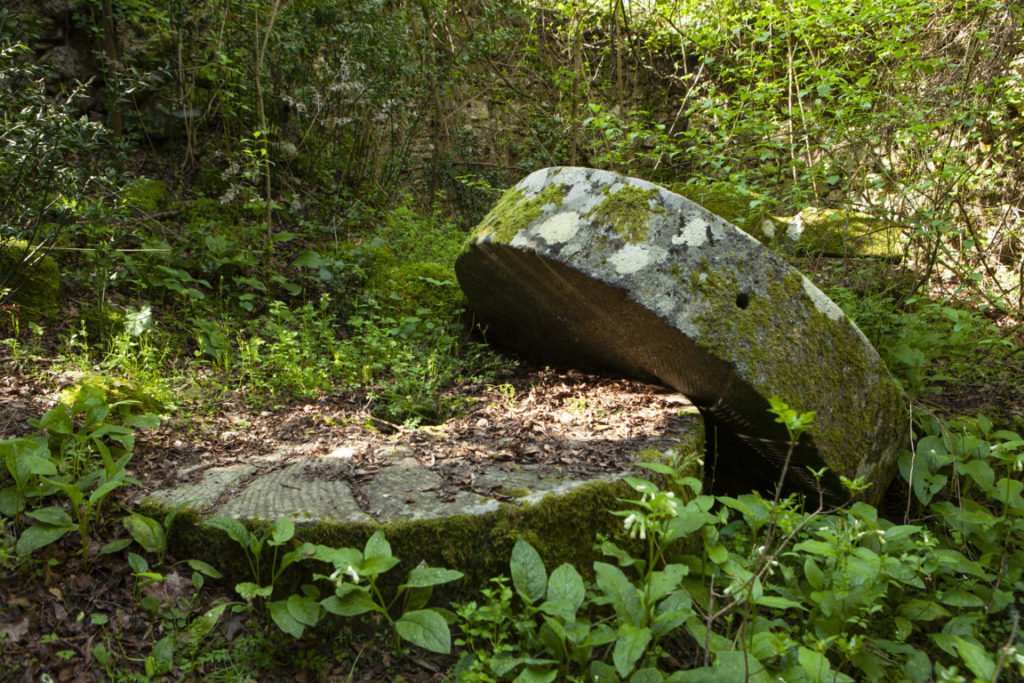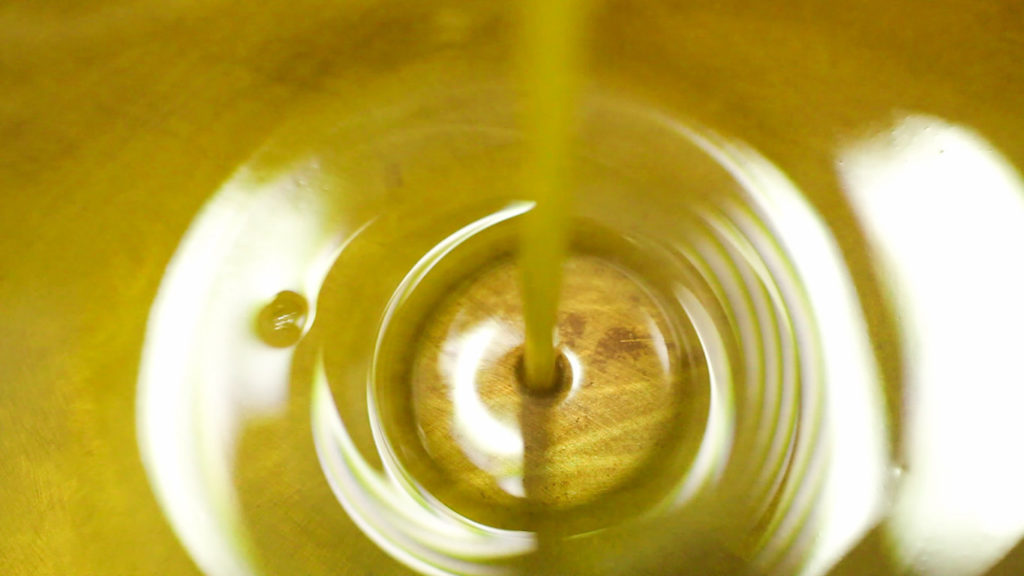The Olive Oil Cycle and the Historic Olive Grove of Mompeo
In addition to the ancient mill, the transhumance routes, and the Roman-era bridge, the Natural Monument of the Farfa Gorges also includes a locality known as Monte. Its uniqueness lies in hosting a Roman villa that once belonged to Pompey the Great, Roman consul.
Within the villa grounds, there is a historic olive grove, as well as a cryptoporticus featuring three basins used for oil collection—evidence of the long-standing relationship between Mompeo and this precious product. The site is privately owned by Stefano Fassone, a Roman with Sabine origins.
Having moved to Mompeo more than twenty-five years ago, captivated by its landscape and the Farfa River, he became a guardian of the place, taking care of the surrounding land and making a substantial contribution to the protection of its natural areas, as well as to the official recognition of the Gorges as a Natural Monument in 2005.
The olive varieties present include:
Olivago with oblong fruit, an elongated olive whose name evokes a light oil—“vague” oil, as it were—once preferred over other varieties and even drinkable by the glass. It was also used as a remedy for ulcers or stomach ailments, and for this reason, it was administered to children.
Primutica, which in the Mompean dialect means “the one that comes first”—a first fruit. This olive ripens from green to a purplish hue and is ready by mid-August. It is also excellent as a table olive, offering a dual purpose.
Mezza Spagna, meaning “half-Spanish,” referring to a large table olive reminiscent of the Spanish variety. This too has a dual purpose—as a table olive and for oil production—and is represented today by a single surviving monumental tree. It has been speculated that Pompey the Great, owner of the villa during the Roman era, brought a cutting from Baetica in Spain, a region he governed during a period of great imperial expansion.
In a region like Sabina, now renowned for producing olive oil of the highest quality—competitive on both a national and international scale—Mompeo confirms its status as a living culture of olive oil, cultivating both care and deep respect for these unique traits.
This element has been included in the Register of Intangible Heritage of local interest of the Municipality of Mompeo, as part of Intervention 4 “Activation of the Observatory on the Intangible Cultural Heritage of the Territory through the application of the REIL methodology – Register of Intangible Heritage of Local Interest”, within the “ MOMAC – MOMPEO UN MODELLO DI ACCOGLIENZA” project, funded by the NRRP (National Recovery and Resilience Plan), Mission: Digitalisation, innovation, competitiveness, culture and tourism, Component: Tourism and culture 4.0, Investment 2.1 “Attractiveness of villages” CUP C79G22000000006.



